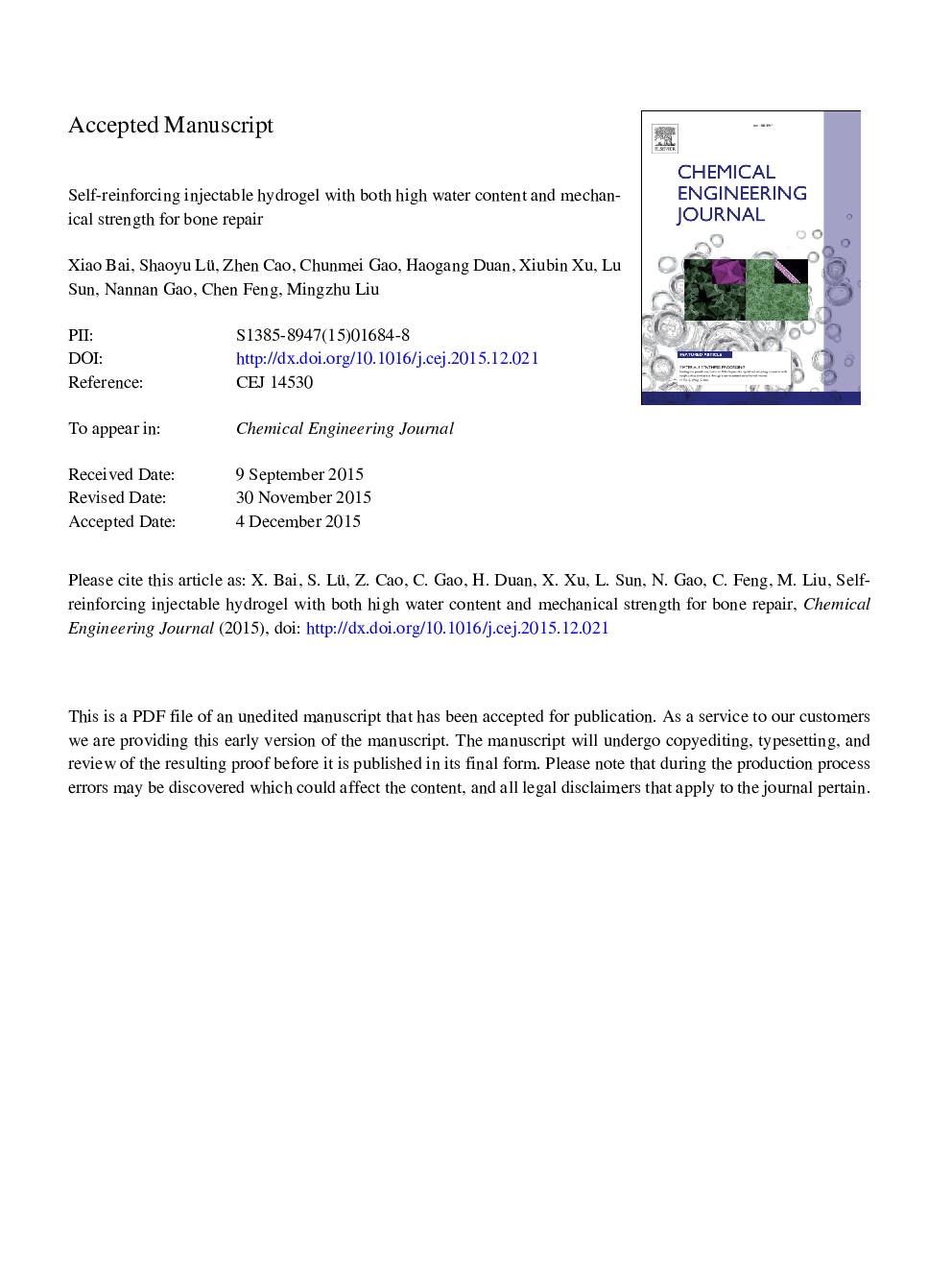| Article ID | Journal | Published Year | Pages | File Type |
|---|---|---|---|---|
| 6582510 | Chemical Engineering Journal | 2016 | 49 Pages |
Abstract
The main challenge for constructing hydrogels serving as a temporary skeleton to support body load in bone tissue engineering is its poor mechanical strength. Covalent crosslinking is generally introduced in hydrogel to enhance its mechanical strength. However, this strategy always results in comitant reduction in the water content. In this study, a self-reinforcing injectable hydrogel based on noncovalent and Diels-Alder (DA) chemical dual crosslinking is developed to improve both its mechanical strength and water content. The noncovalent crosslinking is designed through the supramolecular interaction of cyclodextrin and adamantane, and the sol-gel transition of poly(N-isopropyl acrylamide) (PNIPAM), enabling hydrogel formation in situ after injection. DA chemical crosslinking occurs via furfurylamine grafted chondroitin sulfate (ChS-F) and maleimido-terminated poly(ethylene glycol) (PEG2K-AMI), increasing the mechanical strength of hydrogel (E â¼Â 25 MPa). In vivo bone repair tests were performed, and the results indicated that a cell- and factor-free, purely hydrogel-induced bone repair is achieved, demonstrating its potential in tissue engineering applications.
Related Topics
Physical Sciences and Engineering
Chemical Engineering
Chemical Engineering (General)
Authors
Xiao Bai, Shaoyu Lü, Zhen Cao, Chunmei Gao, Haogang Duan, Xiubin Xu, Lu Sun, Nannan Gao, Chen Feng, Mingzhu Liu,
